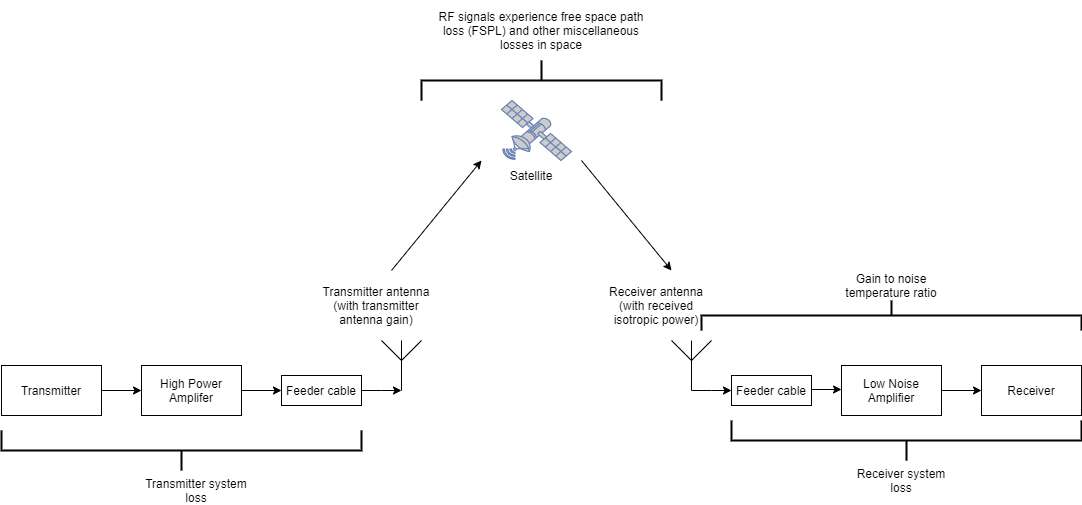satelliteCNR
Carrier-to-noise ratio for configured satellite link budget parameters
Since R2022b
Description
Examples
Input Arguments
Output Arguments
Algorithms
The CNR for a satellite communications system measures the strength of the carrier signal at a receiver relative to the strength of the noise at that receiver. This diagram shows the various signal losses and gains involved in satellite communications.

To compute the CNR cn for a system, the
satelliteCNR function performs various intermediate calculations, using
the properties of the satelliteCNRConfig
configuration object, and outputs them to a structure, info. The function
uses these formulas for the intermediate calculations.
info Structure Field | Formula |
|---|---|
TransmitterEIRP |
|
FSPL | 20*log10(4*π* |
ReceivedIsotropicPower |
|
CarrierToNoiseDensityRatio |
|
ReceivedEbNo |
|
ReceivedEsNo |
|
The function then computes the carrier-to-noise ratio using this formula:
cn = CarrierToNoiseDensityRatio - 10*log10(Bandwidth) -
60
Extended Capabilities
Version History
Introduced in R2022b